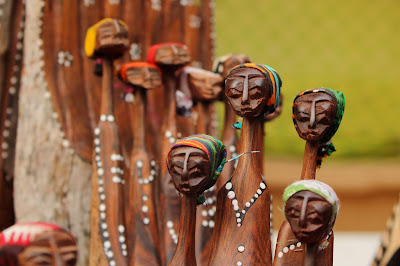Poets and Pancakes by Asokamitran is an important biographical description of the Gemini Studios in the early days of the film industry in India. While its historical significance cannot be denied, Poets and Pancakes, in spite of its rambling style, also dwells on various important themes.
Important Themes
1. Favouritism and Sycophancy at the place of work
Kottamangalam Subbu reaches the position of second in command at the Gemini Studios because of favouritism, 'by virtue of being born a Brahman. He had the ability to look cheerful at all times even after...a flop film.' Subbu seems to be highly versatile as he can up with four alternative ways to do a scene. If they were not good enough, he could come out with fourteen other ways to do the scene. He was a poet, a novelist, and yet, the office boy believes that all this success might have been 'because he seemed so close and intimate with The Boss'. Another reason for Subbu's success might be that 'his general demeanour...resembled a sycophant's'.
2.Hierarchy at the place of work
According to Asokamitran, 'A strict hierarchy was maintained in the make-up department.' The chief make-up man applied make-up on the chief actors and actresses, his senior assistant looked after the second hero and heroine, the junior assistant looked after the comedian. The office boy, the one who feels jealous of Subbu, is on the lowest rung of the hierarchical ladder.
3. Social Integration at the place of work
While favouritism sycophancy and hierarchy are divisive in nature, it is surprising to know that social integration was closely followed in Gemini Studios. As such, the make-up department was first headed by a Bengali who was succeeded by a Maharashtrian. The Maharashtrian was assisted by a Dharwar Kannadiga, an Andhra, a Madras Indian Christian, an Anglo-Burmese and then, of course, there were the local Tamils.
4. Propaganda at the place of work
Unfortunately, Gemini Studios does become a battlefield for propaganda in which the people who work in Studios become the confused, dazed and hapless victims in a war of philosophies and schools of thought that they don't really understand! The Moral Re-Armament army's hidden agenda was to counter 'International Communism'. It was with this express purpose that they visited Madras in 1952! Later when Stephen Spender visited Gemini Studios, it was to propagate the virtues of Communism. Although his speech was interspersed with words like 'freedom' and 'democracy', his accent left them 'baffled'.
5. Jealousy at the place of work
Asokamitran describes jealousy at great length. In this case, there was one person who was jealous of Kottamangalam Subbu. This was the office-boy who had 'entered the studios years ago in the hope of becoming a star actor or a top screenwriter' but he had not managed to any of them. He was in his early forties and looked at Subbu with envy. 'In all instances of frustration, you will always find the anger directed towards a single person openly or covertly and this man of the make-up department was convinced that all his woes, ignominy and neglect were due to Kothamangalam Subbu.' Subbu had managed to write poetry, he had written a novel, and 'He was an amazing actor' all of which the Office boy had wanted but could never achieve.
Important extract-based questions
Such a charitable and improvident man, and yet he had enemies! Was it because he seemed so close and intimate with the Boss? Or was it his general demeanour that resembled a sycophant's? Or his readiness to say nice things about everything? In any case, there was this man in the make-up department who would wish the direst things for Subbu.
1. Who is the 'charitable and improvident man'?
2. What is the contradiction in the first line and what does it expose about Subbu's character?
3 How did he resemble a 'sycophant'?
4 Who is 'this man' who has such negative feelings toward Subbu? Why does he have such negative feelings towards the number two in Gemini Studios?
It was some years later that I learnt that the MRA was a kind of counter-movement to international
Communism and the big bosses of Madras... simply played into their hands.
1. Who is 'I' in the first line and what did he learn about MRA?
2. What is the full form of MRA?
3. Name two of their plays that were seen over and over.
4. Who was the Boss of Gemini Studios? How had he 'simply played into their hands'?
He wasn't the editor of any of the known names of British publications in Madras, that is, those known at the Gemini Studios. Since the top men of The Hindu were taking the initiative, the surmise was that the poet was the editor of a daily - but not from The Manchester Guardian or the London Times. That was all that even the most well-informed among us knew.
1. Who is 'He' in the first line of the extract?
2. Name one poem written by 'He' that you might have read recently.
3. Identify the name of the British Publication that 'He' was an editor of.
4. Identify the narrator of the above lines.

































































